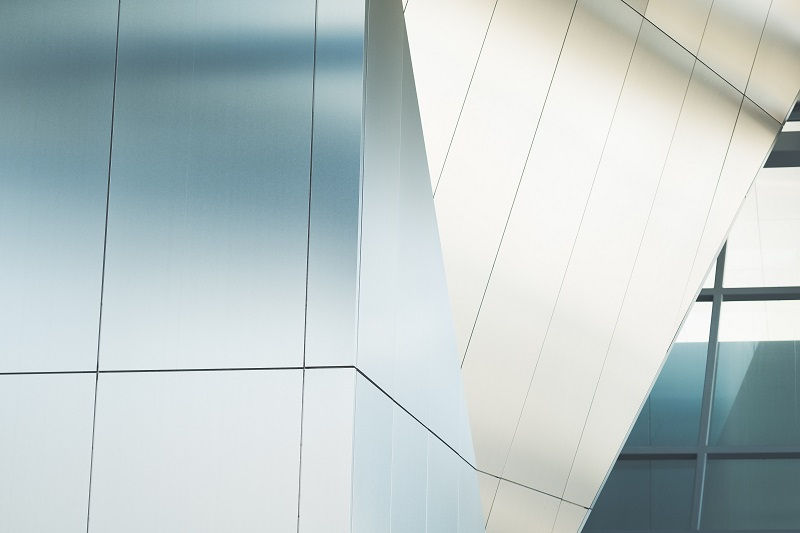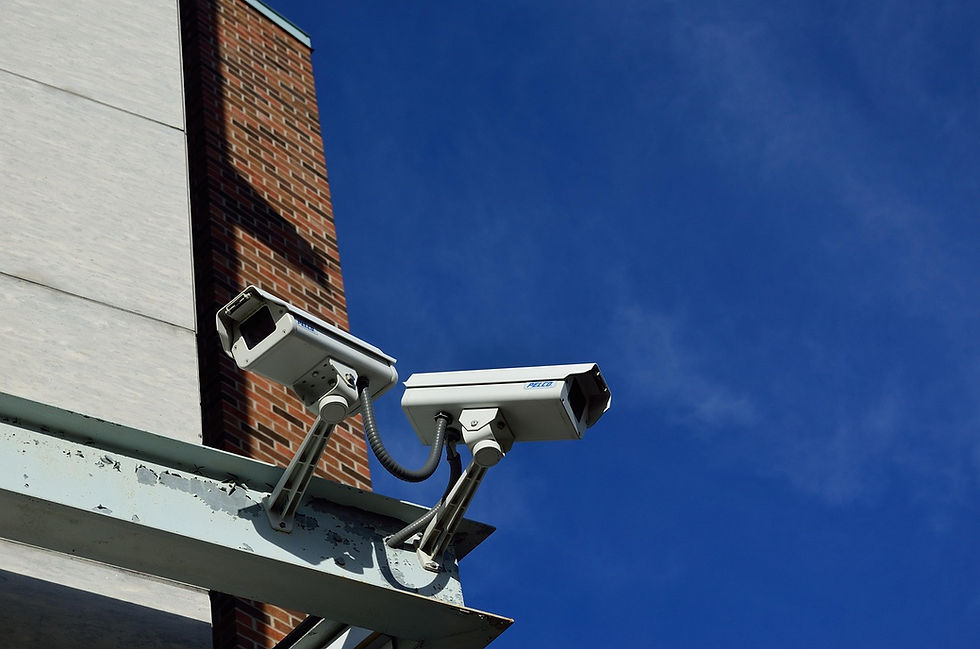Understanding the Benefits of Commercial Cladding Systems for Large-Scale Buildings
- annawrench1315
- Aug 11
- 6 min read
Have you ever walked past a striking commercial building and wondered what gives it that sleek, modern appearance? Or perhaps you've noticed how some buildings seem to weather the elements better than others? What if it was a building solution that can change both the shape and performance of large constructions while saving money in the long term?
The commercial cladding system has revolutionized the way design and safety production. These innovative external solutions provide far more than just a beautiful face, they are unseen heroes of modern architecture, make tireless efforts to protect, isolate and beautify our commercial places.
In this broad guide, we will discover everything needed to learn about the commercial clothing system. You will detect different types of available types, understand many of their benefits and learn to choose the right system for your building.
What Are Commercial Cladding Systems?
Definition and Core Components
The commercial cladding system is really a protective outer skin in a building. Imagine them as a sophisticated raincoat that not only keeps the weather out, but which also helps regulate the temperature and make the building luxurious.
The nice thing about modern cladding lies in its versatility. Unlike traditional building methods, where exterior walls serve both structural and aesthetic purposes, cladding systems distinguish these functions.
Types of Commercial Cladding Materials
The range of materials available for commercial cladding systems is remarkably diverse. Metal options including aluminum composite panels and zinc remain popular for their durability and modern look.
Natural material brings heat and character to commercial buildings. Stone veneer provides a periodic appeal of traditional wall without weight and cost implications. Timber clothing, when treated and maintained properly, provides a permanent alternative that connects buildings to their natural environment.

How Cladding Systems Differ from Traditional Building Facades
Aspects of the traditional building usually include load -bearing walls or curtain wall systems where the outer surface is integrated into the structure of the building. Conversely, commercial cladding systems are non-loaded effects and are associated with the primary structure of the building. This basic difference design opens many benefits when it comes to flexibility and performance of the building.
The ventilated cavity behind the cladding system is a moisture -handling gaming exchanger. Unlike fixed walls, where moisture can be stuck, due to damage over time, air trench allows all water that penetrates the outer layer harmless.
The Key Benefits of Commercial Cladding Systems
Enhanced Building Protection and Durability
When it comes to protecting your building investment, commercial cladding systems are like being a superhero shield. They create a strong barrier to Australia's diverse and often tough weather conditions.
Australia's acute sun can quickly allow the UV radiation production material to look down and cause disappearance, hoof and decrease. Quality clothing material is an engineer to resist particularly UV damage, to maintain their presence and protective properties for decades.
Energy Efficiency and Thermal Performance
One of the most compelling benefits of the commercial cladding system is his ability to dramatically improve the building's energy efficiency. The pristine cavity created by the cladding system acts as a thermal buffer, which reduces the heat transfer between the inner and outer environment.
Energy saving from properly designed cladding systems can be sufficient. Studies show that heating and cooling costs can be reduced by 30%from high performance buildings. In Australia's climate, where the extreme boundaries of temperature are common, it means thousands of dollars in annual energy savings for large commercial buildings.
Aesthetic Appeal and Design Flexibility
Let's face it first impressions matter in the business world. Commercial cladding systems offer unparalleled design flexibility, so that architects and building owners can create specific aspects that provide a statement. Whether you target a smooth, ultra-modern appearance or something and something traditional, your vision is a clothing solution to match.
The possibilities of customization are outside choosing only materials and colors. Clothing systems may include the company's branding elements, which can create a powerful visual identity for your business. Imagine that the company's logo is easily integrated into the building facade, or colors choices that strengthen your brand identity.

Fire Safety and Compliance
Fire Safety Cladding has become an important concern in the industry, especially followed high -profile incidents globally. In Australia, strict rules now control the use of cladding materials to protect buildings and nearby properties. It is necessary to understand these requirements for any commercial construction project.
Australian building standards (AS/NZS) set clear guidelines for fire performance. These standards classify the material based on their combustion and fire spread properties. Some metal and fibre cement products such as non-combustible options meet the highest safety standards.
Cost Considerations
When considering the commercial cladding system, the original value code can cause some stickers. However, looking at the big picture reveals another story. Although it represents an important cost for large buildings, long -term benefits are often justified.
The long-term savings from commercial cladding are where the real value becomes apparent. Costs with low energy costs, which we discuss, can be an number of thousands of dollars annually for large buildings. The protective properties of the cladding system mean less frequent repair for building structure. When you are a factor in these savings over a period of 20 to 30 years, the first investment often pays many times for yourself.
Popular Types of Commercial Cladding Systems
Metal Cladding Systems
Metal cladding systems have become an alternative to going for many commercial projects, and it's easy to see why. Aluminum composite panels (ACP) provide an excellent balance between mild construction, durability and design versatility. These panels include two thin aluminum sheets, which are bound to a core material, and form a stiff, yet work panels.
Steel and zinc options provide their unique benefits for commercial projects. Steel cladding provides extraordinary durability and weather resistance, especially when using colors ties or the like for early products. It is well suited for industrial buildings and warehouses where the strength is crucial.
Natural Material Cladding
Commercial architecture is naturally appealing about natural materials. Stone veneer systems bring accusations of natural stone to modern buildings with no weight and cost implications of the construction of solid stone. These systems use thin stone panels on light support materials and provide the appearance of authentic stone with easy installation.
Timber clothing has experienced the Renaissance in commercial architecture, inspired by stability problems and biotic design principles. Modern wooden clothing systems use exclusively or naturally durable species that can withstand the Australian weather conditions. Products such as thermally modified wood or acetylated wood provide natural wood heating and character increased shelf life.
Modern Composite Materials
Fiber cement panels represent one of the most important innovations in commercial cladding. These panels combine cement, cellulose fibre and other additives to create a material that is strong, durable and very versatile. They can be produced to mimic different textures and finishes, from smooth modern surfaces to wooden grain effects.
High pressure laminates (HPL) push the boundaries of the clothing design. These panels include several layers of craft paper, which are compressed under uninterrupted and high pressure and temperature with resins.
How Do I Choose the Right Cladding System for My Building?
To choose the ideal cladding system, there is a need to carefully consider the specific requirements for your building. Begin by evaluating primary goals for your clothing project. Do you prioritize energy efficiency, beauty change or maximum weather security? Maybe you need a balance of all three.
Working with architects and clothing experts makes a potentially heavy decision to an administered process. These professional materials provide invaluable competence on performance, installation requirements and compliance with regulations. Do not hesitate to ask for examples of similar projects that they have completed and talk to previous customers.
What Maintenance Does Commercial Cladding Require?
Unlike the popular belief, the commercial cladding systems are not completely maintained, but they are less maintenance than traditional buildings. Regular inspection program becomes the spine in effective maintenance of cladding. Experts recommend perfect visual inspection for at least twice a year, ideal spring and autumn.
Guidelines for cleaning and care vary depending on your cladding materials, but most systems benefit from periodic washing to maintain the appearance and performance. Metal cladding usually does nothing more than washing with light detergents and water to remove dirt and atmospheric pollutants.
Making the Right Decision for Your Commercial Building
As we have discovered in this guide, commercial cladding systems provide more than an attractive mask for large buildings. They provide extensive protection against elements, significantly improve energy efficiency and can change the presence of any structure.
The key to success lies in getting close to the clothing project with careful planning and professional guidance. Take the time to understand the specific requirements of your building, examine completely different options and work with experienced professionals who can guide you through the choice and installation process.








Comments